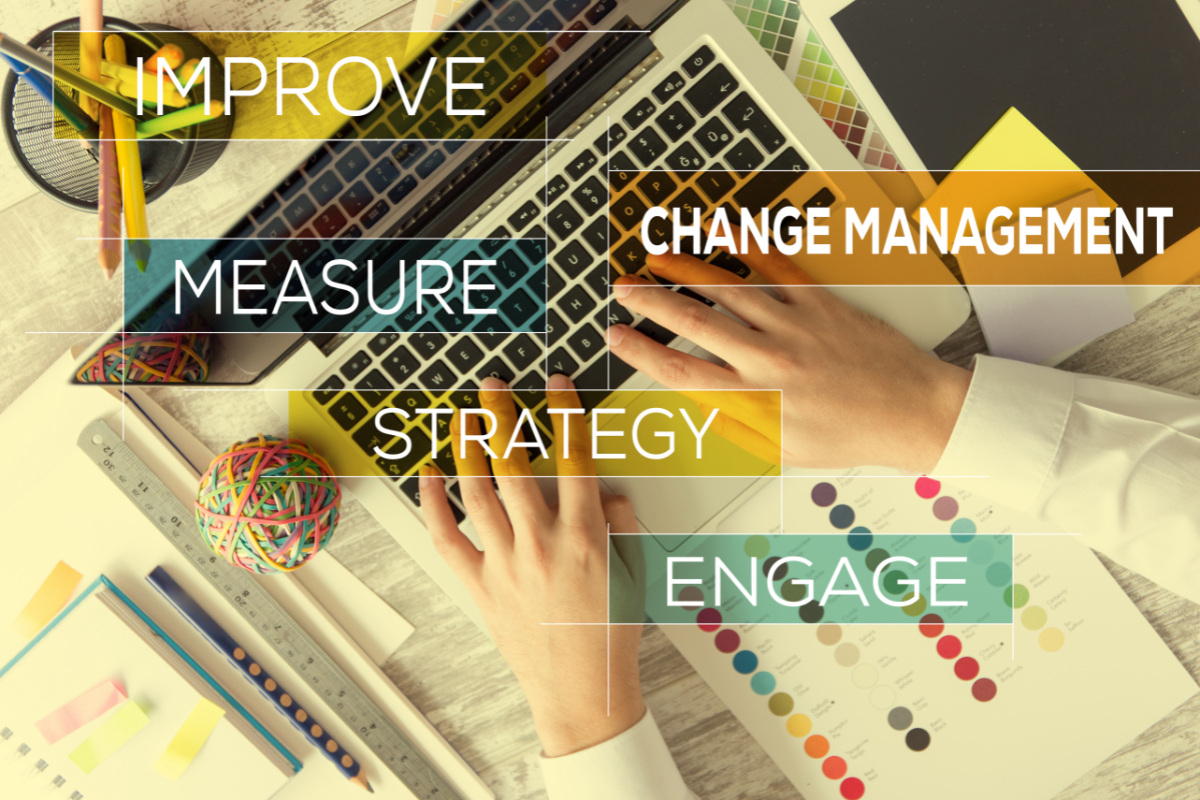Revolutionizing Change Management Strategies for Success
In the realm of modern business, the landscape is constantly shifting, demanding that organizations adapt and innovate their change management strategies to stay ahead.
The intricacies of human behavior and communication play a pivotal role in the success of these strategies, prompting a deeper exploration into the psychology behind effective change implementation.
By uncovering the barriers to communication and behavioral alignment, a clearer path to success emerges.
Stay tuned as we unravel the layers of revolutionizing change management strategies and their impact on organizational success in today’s dynamic and competitive environment.
Key Takeaways
- Craft compelling change stories to enhance understanding and communication.
- Align rewards with desired behaviors for effective organizational change.
- Develop talent through skills alignment and continuous learning culture.
- Harness role modeling and digital tools for engaging employees in transformation.
Change Story for Understanding
The formulation and articulation of a compelling change story are pivotal in fostering stakeholder understanding and acceptance of organizational transformation initiatives. By employing storytelling techniques, organizations can create a narrative that resonates with stakeholders, addressing their concerns and motivations.
However, cognitive biases such as the false-consensus effect and the curse of knowledge can impede effective communication. These biases may lead to misunderstandings or resistance to change. Therefore, it is crucial to craft a change story that not only informs but also engages individuals on an emotional level, bypassing potential cognitive barriers.
Recognizing and addressing these biases through strategic storytelling can enhance stakeholder buy-in and facilitate smoother transitions during periods of organizational change.
Feedback Loop for Reception
Crafting an effective feedback loop is essential in gauging stakeholder reception and ensuring the success of organizational change initiatives. Stakeholder engagement lies at the core of this process, where open channels of communication enable a continuous exchange of thoughts and sentiments.
By actively seeking feedback, organizations can assess the effectiveness of their communication strategies, identify areas for improvement, and address concerns promptly. Effective communication not only fosters transparency but also builds trust among stakeholders, laying a strong foundation for change acceptance.
The feedback loop acts as a strategic tool, allowing organizations to adapt their approaches based on real-time insights, ensuring that the change message resonates with the intended audience and drives successful implementation.
Behavioral Reinforcement Techniques
Utilizing behavioral reinforcement techniques is paramount in shaping and aligning desired behaviors within organizational settings. Behavior modification and reinforcement techniques play a crucial role in driving employee performance and organizational success.
To effectively implement these strategies, organizations can consider the following key points:
- Implementing positive reinforcement mechanisms to encourage desired behaviors.
- Utilizing feedback loops to provide timely and constructive feedback on performance.
- Incorporating recognition and rewards systems to reinforce positive behavior.
- Establishing clear expectations and consequences to guide behavior effectively.
Aligning Reward Systems
In the context of shaping and aligning desired behaviors within organizational settings, a critical aspect to consider is the strategic alignment of reward systems.
Incentive structures and motivational rewards play a crucial role in reinforcing behaviors that drive organizational success. Organizations often struggle when reward systems do not align with desired behaviors, leading to misalignment and decreased motivation among employees.
By designing reward systems that recognize and reinforce behaviors that support the organization’s goals, companies can create a culture that encourages high performance and engagement. It is essential to ensure that rewards are meaningful, timely, and in line with the values and objectives of the organization to effectively drive desired behaviors and outcomes.
Strategic implementation of reward systems can significantly impact employee motivation and overall organizational performance.
Talent Development Importance
Amid the evolving landscape of organizational dynamics, the strategic emphasis on talent development stands as a cornerstone for fostering innovation, resilience, and sustainable growth. Investing in talent development brings numerous benefits, such as:
- Enhanced Performance: Developing skills and capabilities leads to improved individual and organizational performance.
- Employee Engagement: Providing opportunities for growth and development increases employee satisfaction and engagement.
- Succession Planning: Developing talent ensures a pipeline of skilled employees ready to fill key roles.
- Adaptability: Continuous development enables employees to adapt to changing business needs and market demands efficiently.
The importance of development lies in its ability to align skills with business requirements, driving organizational success and competitiveness.
Skills Alignment Strategies
The strategic alignment of skills with organizational objectives is a fundamental driver of sustainable success and competitive advantage in today’s dynamic business environment. Skill development must be tailored to meet evolving business needs to ensure relevance and efficiency. Business alignment ensures that the skills cultivated within the workforce directly contribute to achieving strategic goals. Implementing training and development programs that focus on upskilling and reskilling employees is essential for adapting to changing market landscapes. By fostering a culture of continuous learning, organizations can enhance innovation and growth while staying ahead of the curve. The table below illustrates key strategies for aligning skills with business objectives:
| Skills Alignment Strategies | Description | Benefits |
|---|---|---|
| Skill Gap Analysis | Identify gaps between existing and required skills | Targeted Training |
| Competency Framework | Define core competencies for each role | Role Clarity |
| Performance Metrics | Measure skill acquisition and application | Data-Driven Decisions |
Continuous Learning Culture
Establishing a culture of continuous learning within an organization is pivotal for fostering adaptability, innovation, and sustained growth in today’s rapidly evolving business landscape.
- Encourages employees to build capabilities through ongoing skill enhancement programs.
- Fosters innovation by creating an environment where new ideas and approaches are welcomed.
- Enhances employee engagement and satisfaction through opportunities for personal and professional development.
- Drives organizational success by ensuring that skills are aligned with current and future business needs.
Role Modeling Impact
In influencing behavior change within organizations, role modeling plays a pivotal and strategic role in shaping desired outcomes and fostering a culture of alignment and credibility.
Behavioral modeling impact is significant as employees often mirror the behaviors exhibited by their leaders. Change leadership relies heavily on the principle of behavior modification through consistent role modeling. Leaders who exemplify the desired behaviors set a standard for others to follow, creating a ripple effect within the organizational culture.
It is crucial for leaders to ensure consistency between their actions and the values of the organization to build trust and credibility. By consciously embodying the behaviors they wish to see in their teams, leaders can effectively drive change and establish a culture of excellence.
Leaders’ Behavior Influence
An essential aspect of organizational change management is the profound impact that leaders’ behavior exerts on shaping the direction and success of transformation initiatives. Leaders’ actions play a crucial role in influencing the behavior of employees and fostering a culture conducive to change. Key points to consider in understanding leadership influence and behavior modification include:
- Leaders should exemplify desired behaviors to set the tone for the organization.
- Consistency between leaders’ actions and organizational values is crucial for credibility.
- Effective leadership involves both conscious and unconscious role modeling.
- Leaders have the power to shape organizational culture through their behavior.
Digital Transformation Impacts
The advent of digital transformation has revolutionized organizational landscapes, significantly impacting employee engagement and operational strategies. The evolving workforce dynamics, influenced by technological advancements, bring both opportunities and challenges to change management.
Social and mobile technologies play a crucial role in enhancing engagement by providing platforms for online collaboration and participation in organizational decisions. Leveraging digital tools for communication and teamwork not only boosts employee engagement but also facilitates smoother implementation of change initiatives.
As organizations navigate the digital realm, understanding the impact of technology on workforce behaviors and interactions becomes imperative for successful change management strategies. Embracing these shifts and utilizing online platforms effectively can lead to more efficient and impactful change processes.
Employee Engagement Strategies
Amid the evolving landscape shaped by digital transformation, effective employee engagement strategies are paramount for organizations seeking to navigate change successfully and foster a culture of adaptability and innovation.
To achieve this, organizations can implement the following strategies:
- Employee motivation: Utilize intrinsic and extrinsic motivators to inspire employees towards change.
- Communication techniques: Employ clear, transparent, and consistent communication methods to ensure all employees understand the goals and rationale behind the change.
- Feedback mechanisms: Establish feedback loops to gauge employee sentiment and adjust engagement strategies accordingly.
- Recognition and rewards: Implement recognition programs and reward systems that acknowledge and incentivize employee contributions towards change initiatives.
Leveraging Digital Tools
Utilizing digital tools is instrumental in enhancing organizational communication, collaboration, and efficiency during change management initiatives. Digital engagement plays a pivotal role in fostering a sense of connectivity and involvement among employees, which is crucial for successful change implementation.
Tech integration allows for streamlined processes, real-time feedback mechanisms, and enhanced transparency throughout the change journey. Leveraging digital platforms enables leadership to disseminate information effectively, gather insights from employees, and create a more interactive environment for change discussions.
Enhancing Change Initiatives
In the realm of change management, optimizing strategies to enhance change initiatives is paramount for organizational success and adaptability in dynamic environments.
- Stakeholder Engagement: Involving key stakeholders from the outset fosters buy-in and ownership of the change process.
- Communication Strategies: Clear, transparent, and consistent communication is vital to ensure understanding and alignment with the change objectives.
- Training and Development: Providing training programs and resources to equip employees with the necessary skills and knowledge to navigate the change successfully.
- Feedback Mechanisms: Establishing feedback loops to gather input, address concerns, and make adjustments throughout the change journey.
Conclusion
In conclusion, the imperative evolution of change management strategies in the realm of business necessitates a deep understanding of human communication and behavioral dynamics.
By embracing innovative techniques such as feedback loops, behavioral reinforcement, and talent development, organizations can navigate the complexities of digital transformation and enhance employee engagement.
The strategic alignment of reward systems and the utilization of digital tools are pivotal in revolutionizing change management for success in today’s dynamic business environment.







